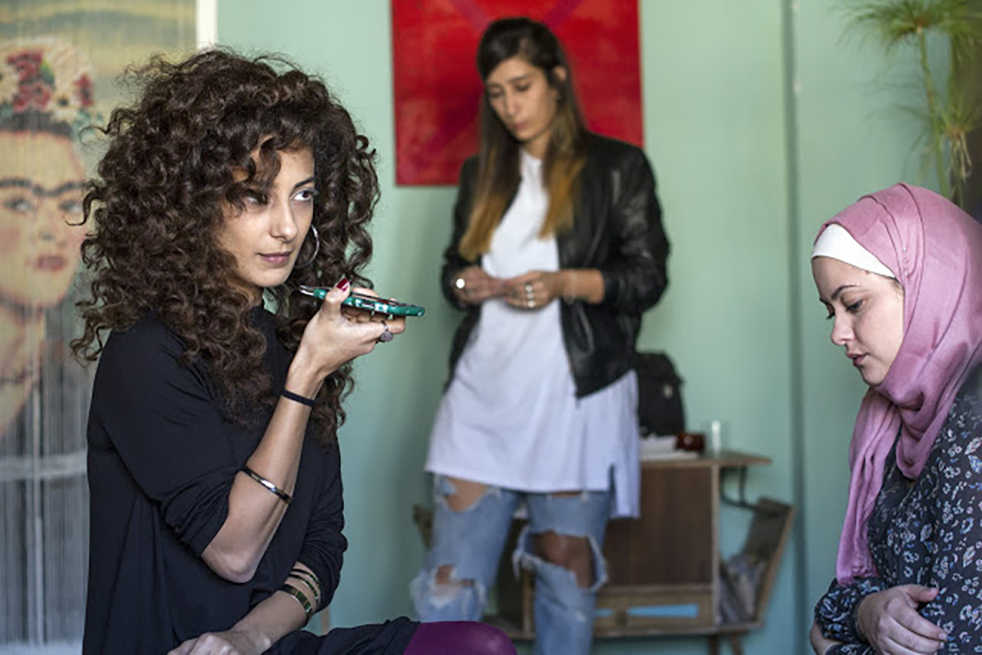Directed by Maysaloun Hamoud, “In Between” is the story of two highly liberal Palestinian women, Layla (Mouna Hawa, “Zaytoun”) and Salma (Sana Jammelieh), and their new conservative and religious roommate, Nour (Shaden Kanboura) living in Tel Aviv.
The film was shown as part of the Atlanta Jewish Film Festival, which runs until Feb. 15 and aims to explore culture and history through the lens of Judaism. The festival features over 50 films, many of which are acclaimed but may be hard to see anywhere else.
“In Between” offers a perspective rarely seen or heard about when discussing or portraying Israeli-Palestinian relations. Instead of long, heavy histories, the film freshly explores more intricate personal connections.
The three women live in the heart of Israel’s second largest city, but they exist almost completely outside its culture. The women are given looks in public and even scorned for speaking Arabic. They interact mostly with other immigrants and outsiders.
At the same time, however, the fact that they reside in Tel Aviv rather than any other smaller city or town in the region means Layla and Salma’s liberal views, promiscuity and drug use can exist, even if only in a fragile balance.
Though the “roommates who are opposite in every way” is one of the most overplayed tropes in comedy, the cliché is made bearable by Hamoud’s ability to depict the depth of each character and allow their differences to play out in a more natural way.
Nour is neither a prudishly devout Muslim who believes her roommates worship the devil,
nor is she just an innocent girl who undergoes an “ugly duckling” type transformation once
she gets a taste of Layla and Salma’s lifestyle.
The resolution of their differences avoids the stereotypical meeting in the middle. Their acceptance of each other is rooted in the respect of people simply because they are human, without necessitating change.
The film follows each woman as she goes through a personal trial that puts her independence, pride and sense of self at risk. They fight pressure to fundamentally compromise themselves, and all three persevere and do not give in, largely due to the support they provide one another.
Hamoud does not, however, allow this to be a simple story, one in which a simple moral such as “as long as you are determined, you can do anything” exists.
Instead, Hamoud crafts a brutal conclusion: each of the protagonists is left contemplating whether it is better to be true to oneself in a world where independent womanhood is all but explicitly punished, or accept oppression for the sake of comfort.
Although the film contains themes and even specific moments which evoke almost universal empathy, it never loses focus of its setting. Tel Aviv is not an arbitrary location to show the women as outcasts, and the conservative expectations of women in the Middle East are not any ordinary form of oppression. These complexities create a unique situation, which in turn creates a unique tale of nuanced characters.
Despite its masterful use of setting and well-developed characters, the film does, however, have its weak aspects. While the long silences and lingering shots of the camera allow the viewer to feel the mental process of a character, sometimes these techniques seem like an unnecessary tool simply used because it is “artsy.”
The film also suffers from incessant use of juxtaposition, causing it to lose its power for storytelling and become a crutch for a quick laugh.
Ultimately, “In Between” achieves a goal which few festival dramas do: it is not preachy. Not looking to appease audience with a clean ending or simple takeaway, the film is completely genuine in its portrayal and messiness.
“In Between” won the NETPAC Award for World or International Asian Film Premiere at the Toronto International Film Festival and the Danny Lernar Award for Best Feature Debut at the Haifa International Film Festival.
